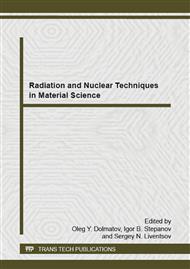p.655
p.661
p.666
p.673
p.678
p.684
p.689
p.694
p.698
Mathematical Model of Pressure and Flow Distribution on Fluorine Production Lines
Abstract:
This paper is devoted to one of the most urgent problems in the automation of fluorine production (FP) processes: the development of a dynamic model of the hydrodynamic regime. The paper suggests a dynamic model represented in the form that provides the effective use of up-to-date methods of synthesis and analysis for control algorithms. The model is a set of dynamic models of individual units and devices that have a significant impact on the processes in the technological scheme.
Info:
Periodical:
Pages:
678-683
Citation:
Online since:
January 2015
Authors:
Keywords:
Price:
Сopyright:
© 2015 Trans Tech Publications Ltd. All Rights Reserved
Share:
Citation:


